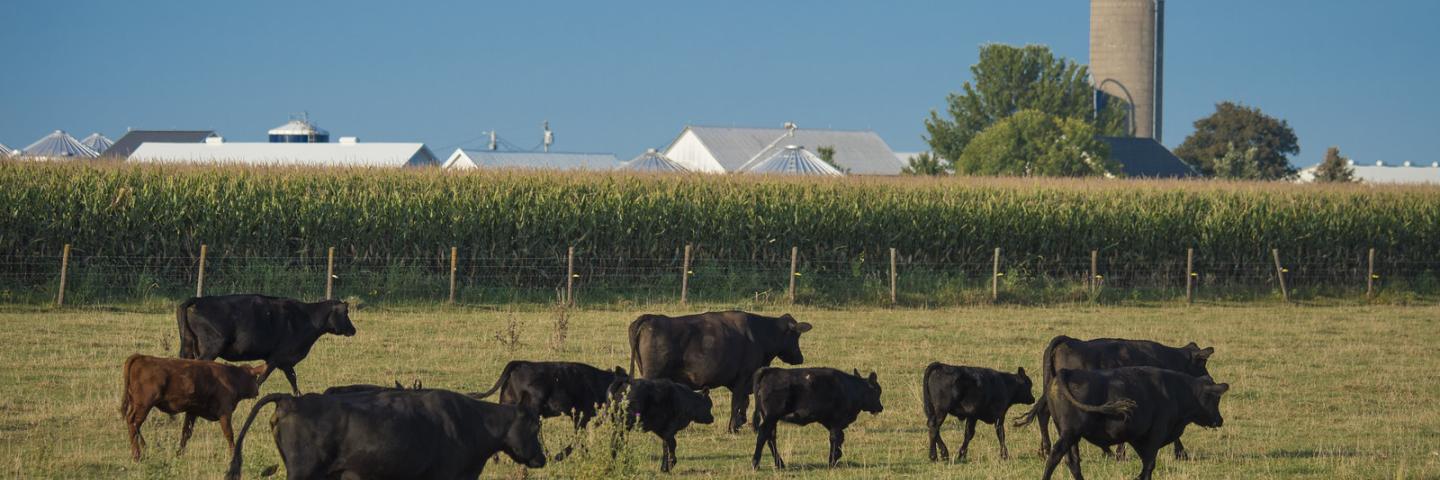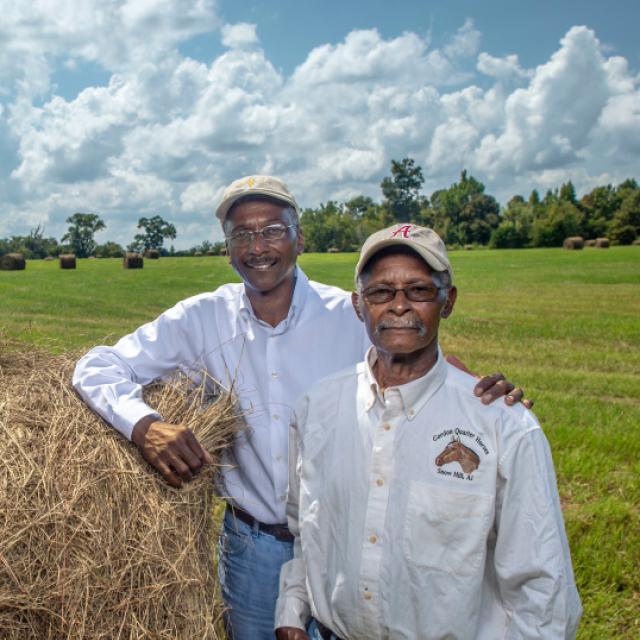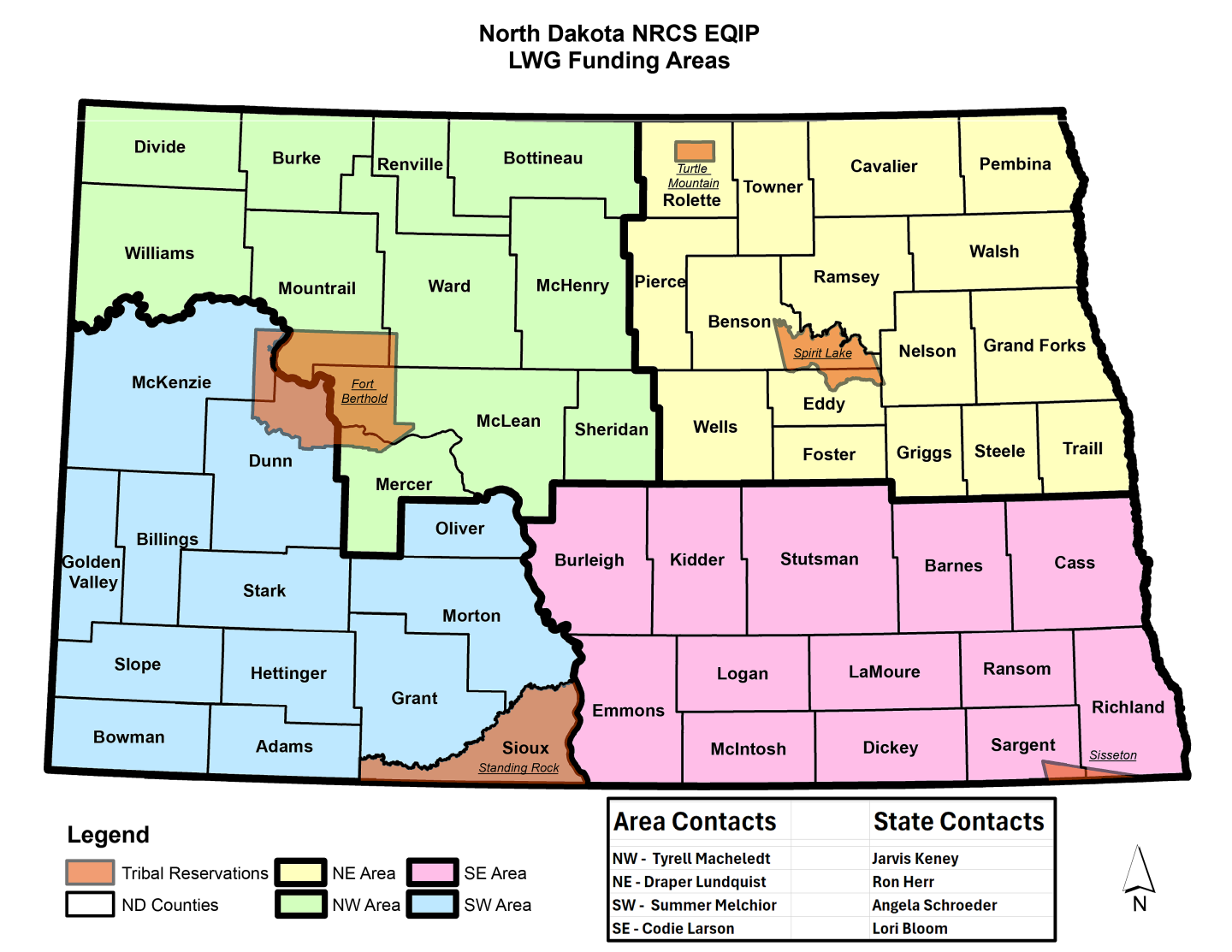
The Environmental Quality Incentives Program (EQIP) is NRCS’ flagship conservation program that helps farmers, ranchers and forest landowners integrate conservation into working lands.
On This Page
Applying for the Environmental Quality Incentives Program
Through EQIP, agricultural producers receive financial and technical assistance to implement structural and management conservation practices that optimize environmental benefits on working agricultural land.
EQIP applications are accepted on a continuous basis, however, NRCS establishes application "cut-off" or submission deadline dates for evaluation, ranking and approval of eligible applications. EQIP is open to all eligible agricultural producers and submitted applications may be considered or evaluated in multiple funding pool opportunities. The following document describes how to apply for Farm Bill programs or visit the following website: www.nrcs.usda.gov/getstarted. Agricultural producers and owners of non-industrial private forestland and Tribes are eligible to apply for EQIP. Eligible land includes cropland, rangeland, pastureland, non-industrial private forestland and other farm or ranch lands. Applicants must control or own eligible land, comply with adjusted gross income limitation provisions, be in compliance with the highly erodible land and wetland conservation requirements, and develop an NRCS EQIP plan of operations. Additional restrictions and program requirements may apply.
To apply for EQIP, contact your local service center.
EQIP is open to all eligible agricultural producers without discrimination or bias. (Note: Statutory requirements, such as priority for veteran farmers or ranchers, are allowed preference.)
For additional information on Environmental Quality Incentives Program (EQIP) please visit the following links:
ND NRCS Announces National Water Quality Initiative (NWQI) and Source Water Protection Area (SWPA) Projects for Fiscal Year 2026
North Dakota NRCS was awarded NWQI and NWQI-SWPA projects for FY2026. NWQI is an initiative delivered with state water quality agencies and the Environmental Protection Agency to address agricultural sources of water pollution, specifically nutrients, sediment, and pathogens, in priority watersheds. The NWQI-SWPA project includes source water protection for ground and surface waters in agricultural sources of water pollution.
Approved Locations: Approved HUC 12’s in the Big Muddy, Wild Rice and Grafton/Park City SWPA Watersheds.
Application Deadline: September 19, 2025.
If funds are still available, additional batching’s will occur at a later date (until funds are expended) using the Act Now process, for more information on Act Now click here.
NRCS North Dakota Announces Funding Opportunities in Fiscal Year 2026
October 1, 2025 – September 30, 2026
Natural Resources Conservation Service (NRCS), Financial Assistance and Stewardship Farm Bill Programs operate under a continuous sign-up; therefore, applications are accepted on a continuing basis throughout the year and cutoff dates are scheduled to allow for ranking, prioritizing, and selection of applications for funding. The FY 2026 EQIP Program cutoff date (batching) for FY 2026 EQIP applications is September 19, 2025. Applications on file by close of business (COB) will be considered for funding under the FY 2026 allocation for the following funding pools:
- Local Work Group’s
- Tribal
- Organic
- Energy
- Conservation Planning Activities
- Beginning Farmer
- Socially Disadvantaged
- Wildlife
- Forestry
- Irrigation
- High Tunnel Systems/Small Farm
- Animal Feeding Operations
- Conservation Incentive Contracts (CIC)
North Dakota Local Work Group (LWG) subaccounts for FY 2026 will be as follows: NE Zone, NW Zone, SE Zone, SW Zone and Tribal, cropland and grassland categories within each subaccount except Tribal.
If funds are still available, additional batching’s will occur at a later date (until funds are expended) using the Act Now process, for more information on Act Now click here.
State Determined Minimum Threshold for Act Now: 10 points
For more information on EQIP, contact your local service center.
National and State Priorities
The following national priorities, consistent with statutory resources concerns that include soil, water, wildlife, air quality, and related natural resource concerns, may be used in EQIP implementation:
- Reductions of nonpoint source pollution, such as nutrients, sediment, pesticides, or excess salinity in impaired watersheds consistent with total maximum daily loads (TMDL) where available; the reduction of surface and groundwater contamination; and the reduction of contamination from agricultural sources, such as animal feeding operations
- Conservation of ground and surface water resources
- Reduction of emissions, such as particulate matter, nitrogen oxides, volatile organic compounds, and ozone precursors and depleters that contribute to air quality impairment violations of National Ambient Air Quality Standards
- Reduction in soil erosion and sedimentation from unacceptable levels on agricultural land
- Promotion of at-risk species habitat conservation including development and improvement of wildlife habitat
- Energy conservation to help save fuel, improve efficiency of water use, maintain production, and protect soil and water resources by more efficiently using fertilizers and pesticides and
- Biological carbon storage and sequestration
In addition, North Dakota has identified the following priorities:
- Grasslands Health
- Soil Health
- Water Quality and Quantity
- Wildlife habitat enhancement
Get Started Today for 2026 Funding
Applications will be accepted throughout the year.
To learn how to get started with NRCS, visit www.nrcs.usda.gov/getstarted
NRCS will help eligible producers develop an EQIP plan of operations, which will become the basis of the EQIP contract.
Download the NRCS Conservation Application:
EQIP applications will be ranked based on a number of factors, including the environmental benefits and cost effectiveness of the proposal.
Archived EQIP (2025)
Archived EQIP (2024)
Archived EQIP (2023)
Archived EQIP (2022)
Sign up for Farm Bill email updates
North Dakota Programs Contact:
Jarvis R. Keney
Assistant State Conservationist (Programs)
Phone: (701) 530.2005
jarvis.keney@usda.gov
Additional Information
Apply for Environmental Quality Incentives Program (EQIP)
The Environmental Quality Incentives Program (EQIP) provides financial and technical assistance to agricultural producers and non-industrial forest managers.
Learn MoreHistorically Underserved Farmers and Ranchers
The Agriculture Improvement Act of 2018 (2018 Farm Bill) includes provisions that address socially disadvantaged, beginning, limited resource, and veteran farmers and ranchers (“historically underserved producers”).
Learn MoreFarm Bill
The 2018 Farm Bill was enacted on December 20, 2018. The Farm Bill continues its strong support for conservation efforts of America’s farmers and ranchers through reauthorization and expanded flexibility of NRCS conservation programs.
Learn MoreReady to get started?
Contact your local service center to start your application.
How to Get Assistance
Do you farm or ranch and want to make improvements to the land that you own or lease?
Natural Resources Conservation Service offers technical and financial assistance to help farmers, ranchers and forest landowners.

To get started with NRCS, we recommend you stop by your local NRCS field office. We’ll discuss your vision for your land.
NRCS provides landowners with free technical assistance, or advice, for their land. Common technical assistance includes: resource assessment, practice design and resource monitoring. Your conservation planner will help you determine if financial assistance is right for you.
We’ll walk you through the application process. To get started on applying for financial assistance, we’ll work with you:
- To fill out an AD 1026, which ensures a conservation plan is in place before lands with highly erodible soils are farmed. It also ensures that identified wetland areas are protected.
- To meet other eligibility certifications.
Once complete, we’ll work with you on the application, or CPA 1200.
Applications for most programs are accepted on a continuous basis, but they’re considered for funding in different ranking periods. Be sure to ask your local NRCS district conservationist about the deadline for the ranking period to ensure you turn in your application in time.
As part of the application process, we’ll check to see if you are eligible. To do this, you’ll need to bring:
- An official tax ID (Social Security number or an employer ID)
- A property deed or lease agreement to show you have control of the property; and
- A farm number.
If you don’t have a farm number, you can get one from USDA’s Farm Service Agency. Typically, the local FSA office is located in the same building as the local NRCS office. You only need a farm number if you’re interested in financial assistance.
NRCS will take a look at the applications and rank them according to local resource concerns, the amount of conservation benefits the work will provide and the needs of applicants. View Application Ranking Dates by State.
If you’re selected, you can choose whether to sign the contract for the work to be done.
Once you sign the contract, you’ll be provided standards and specifications for completing the practice or practices, and then you will have a specified amount of time to implement. Once the work is implemented and inspected, you’ll be paid the rate of compensation for the work if it meets NRCS standards and specifications.


